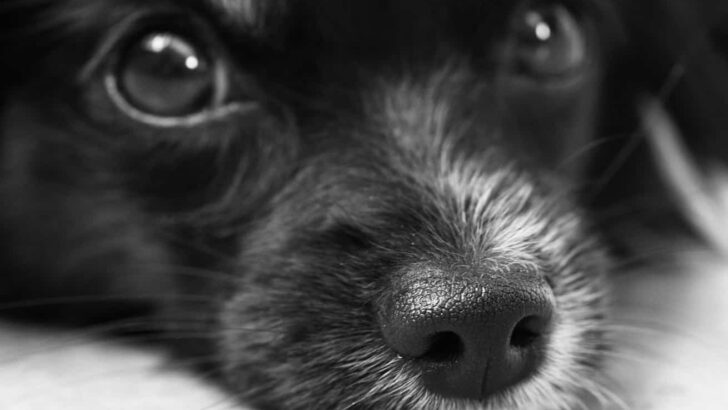- Nom Nom Dog Food Subscription Review - November 7, 2023
- 7 Best Dog Bed Ideas For Great Dane (DIY Options) - July 16, 2022
- Top 5 Rated Best Non-Prescription Diabetic Dog Food - July 15, 2022
Preparing for pick up day with your new dog or puppy is an exciting time! It seems like there is so much to do. That’s not just a perception, which is why you need a plan! A list or two won’t hurt either. If nothing else, a little preparation will help you feel better, which is going to make your dog more calm too.
If you’re worried you’ll forget something you need or maybe even be totally unaware of a must have, let Scout Knows be your guide to new puppy-dom. Let’s go over what you need before your dog gets home and how to make the transition gentle on your new dog.
You need to meet your puppy’s basic needs for food, shelter, and a personal connection. You are also going to train your dog and take him outside on adventures. What do you need to be prepared?
Moving Dog To New Home
Bringing a new dog home might entail picking up your new puppy from a breeder. It could also involve picking up your older dog from a rescue or shelter. Of course, puppies also come from shelters, and it’s possible to adopt an older dog from a breeder. But most of the time, your newborn puppies are just leaving their first home.
An older or shelter dog has been on a few trips and already had some change in their routine. This can go either way: your adopted dog is either used to some hustle and bustle, or they’re worried about change since it hasn’t gone so well for them in the past.
Each situation calls for slightly different actions and preparation.
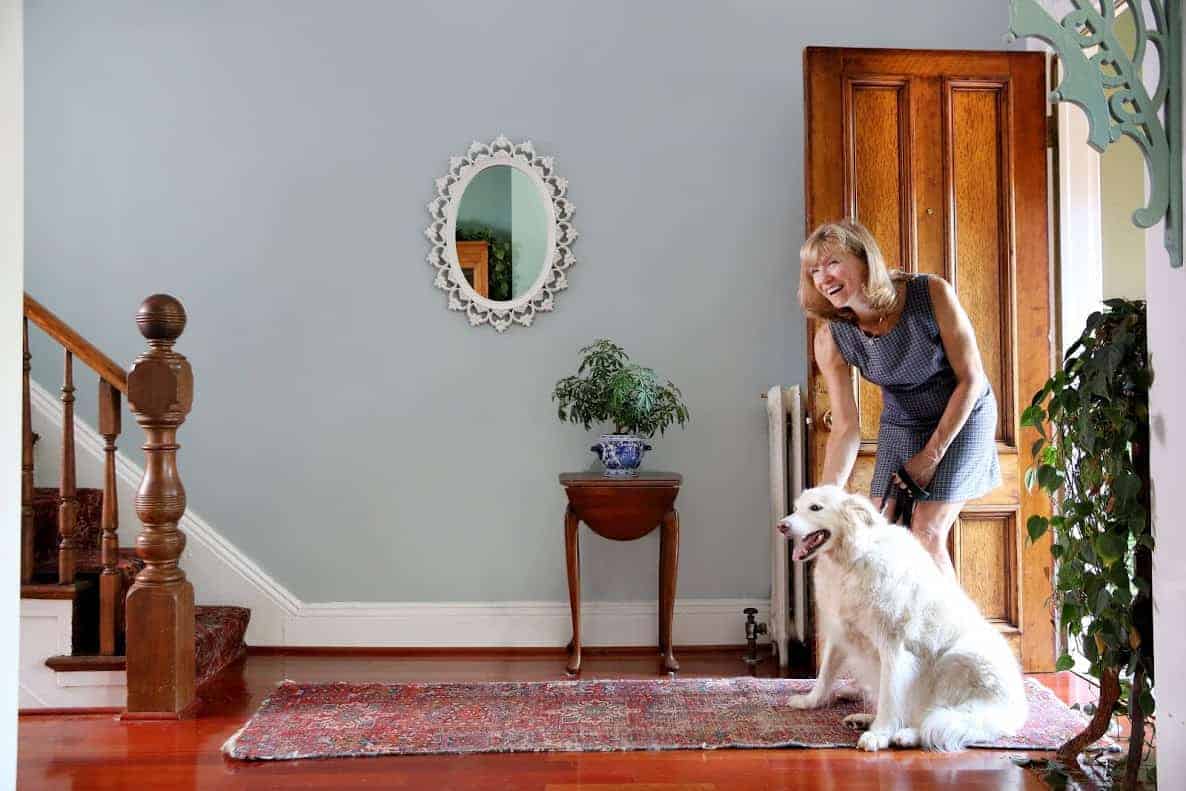
How To Bring A Puppy Home For The First Time
A brand new puppy is squishy, wiggly and warm. They’re full of mischief and delight and a real bundle of fun. You know you need toys, but what kinds? What about food and cleaning supplies? Not only to you risk not having what you need by not preparing, but you can easily overspend by buying too much.
Here is a list to get you started. If you’d like to read even more about gear you need for your new dog, head over to our other article all about it.
New Dog Gear
Dog Carrier: Choose an appropriate size crate for your dog and feel free to ask your vet for a recommendation. Look for crates that are easy to clean. If you get a large breed dog and think you’ll be moving the crate around a lot, think about getting two if there is room in your budget.
Dog Bed: You need a durable dog bed that is easy to clean. Pick one with a cover that zips off. You’ll thank me later.
Puppy Training Pads: I say don’t make potty training harder. Get some puppy training pads. You can use them to help your puppy get used to peeing outside. Even older dogs can sometimes benefit from returning to basics when they get to their new home.
Dog Accident Cleaner: Have a cleaner formulated for pet accidents on hand. The faster you get to the issue the cleaner the end result will be.
A Collar Or Harness: You’ll need to go on walks and your dog or puppy both need to be leashed during yard time in many places. Pick a comfortable collar or harness that fits your dog. If your new dog is a puppy, please check the collar often. Your puppy will grow and you want to be sure the collar remains comfortable.
A Leash: You won’t get far with your harness unless you have a leash. Choose from a retractable leash or a static leash, but make sure it’s the right length for you. You also want to feel in control while you are walking your dog. How does the leash make you feel?
Blankets: Toss a blanket over the sofa, let your dog lay on it like an extra bed, or snuggle your puppy up in it. Blankets, to me, are synonymous with dog ownership.
Dog Food Bowl: Your choices in dog bowls are endless. There are even interactive toy bowls that let your dog work for his food. Choose something that will last the test of time and is easy to clean. Large dogs benefit from an elevated food and water station. Little dogs have less distance to reach.
Dog Food: Choose the best quality dog food you can afford. If you are bringing home a puppy, pick a good puppy food or adjust the amount you feed so your puppy gets all the nutrients and calories they need. In fact, this is another great time to ask your vet for their opinion. We also went in-depth about choosing the best food for your dog, so feel free to read more by following the link.
Once you have those basics covered, it’s time to talk toys.
Toys
You’ve got to have a few different sorts of toys for your puppy or new dog’s enrichment. Each type of toy stimulates a different dog behavior. The more you have, the longer they will last. You’ll learn how destructive your puppy is once you spend a bit of time together.
Balls: Toy balls are great for fetch and tiring your puppy or dog out. They’re very tactile for dogs and get going at a good speed. Pick up a couple in different sizes!
Tossing Or Fetch Toy: I sometimes call this type of toy a ‘floppy’ toy or a rope toy, but it doesn’t need to be made of rope. Any toy that will dangle in your dog’s mouth will do. You can play fetch with it, and your dog can get in some good growling and head shaking. It makes a good tug-of-rope toy too.
An Interactive Toy: Try out a few interactive toys on your dog. If your dog enjoys playing with them, they will have a busier, more enriching life that includes lots of independent play.
A Soft Toy: Any kind of cuddly, soft, plush toy will do, but some very destructive dogs should only play with soft toys during supervision.
A Chew or Teething Toy: Get a few toys designed for your dog to chew. Puppies and adult dogs both need to chew for their physical and mental health. Let them go wild with something safe, and not your kitchen table.
Each of these types of toys gives your dog something different. Pick up a few spares so you can rotate the toys. This helps your dog have novelty and keeps your toys from wearing out as fast.
Misc. Puppy Stuff
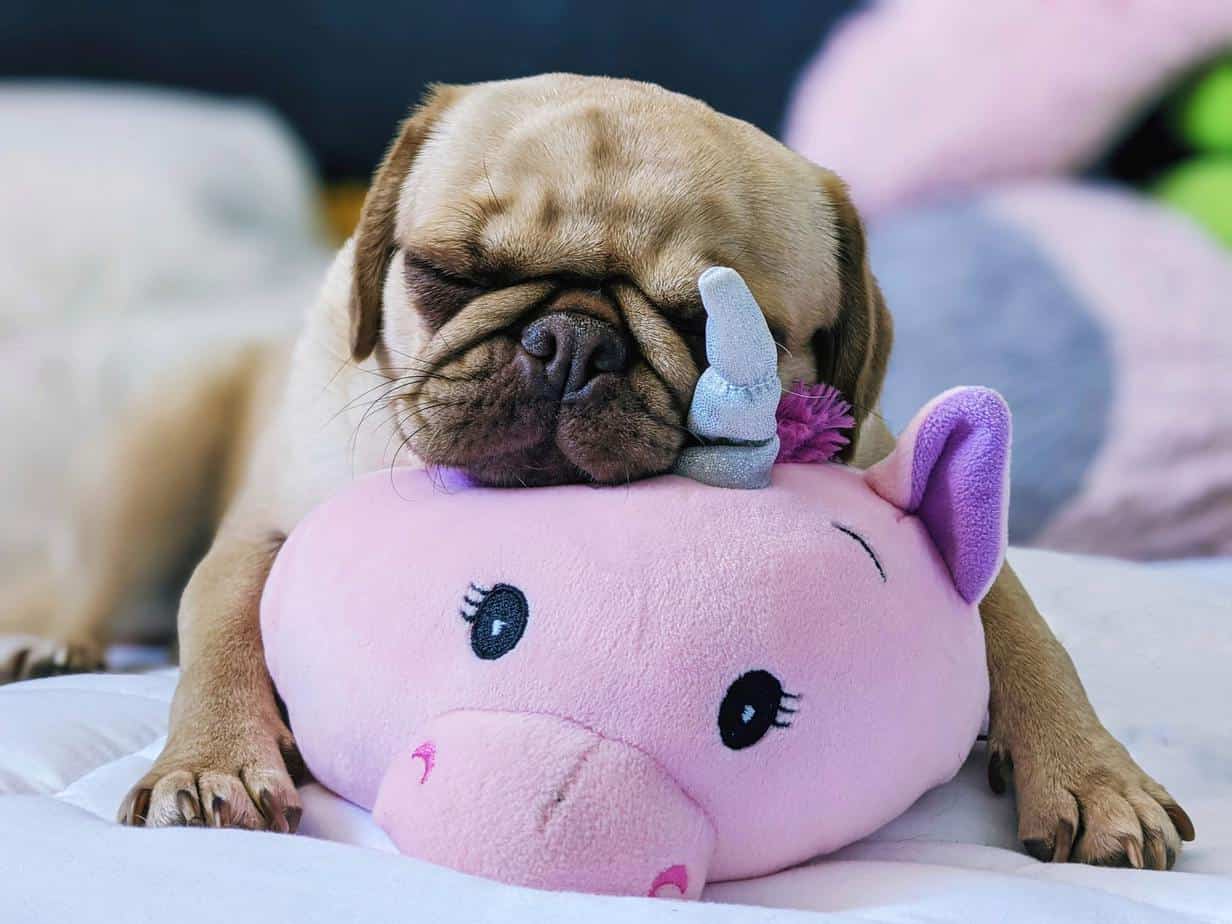
Some new puppy supplies are situational. If you live in a very cold climate and your puppy comes home during winter, a coat or boots might be on your list of needs. Your breeder will probably give you some of the food your puppy is used to, but you’ll need some more. Find out what food your breeder feeds ahead of time so you can buy some extra in advance.
Try to resist the urge to let all of your friends and family descend on your house to meet the new dog. Things can get pretty overwhelming, so go slow and easy with introducing even more new things.
Personally, I’m a bad dog owner who likes to sleep in the bed with the dogs. I have even done this with puppies. If you don’t want to sleep with your dog for the rest of your life, however, resist this urge! You do need to be careful not to roll over on your puppy during the night, but napping together improves bonding.
You can keep this to short day naps on the sofa or down near your dog’s bed instead of in yours.
Bringing Home A Rescue Dog
Rather than repeat all of the similar things about bringing home a rescue or adult dog, I want to point out the special circumstances. You will of course need food, toys, and some cleaning supplies. A leash and collar are standard.
But your adopted dog may be scared or unsure. He might take longer to trust you. He could be very rambunctious with lots of energy. You could even have some behavior issues to work through.
I think it’s very important to set up a little space for your older or adopted dog. This is the dog’s own little part of your home. Their crate is there, their toys are nearby. If possible, pick a spot with soft lighting that can see other areas of the house, but is sheltered and secure. Try to place this spot along at least one solid wall.
You don’t want your new dog to spend all of his time there, but it helps some dogs feel secure to have their own space. From there, you can include your new dog in your space and all of your activities.
Another thing you need with a rescue dog is patience, and it’s a different sort than puppies require. You may have to coax your new dog out of sadness or soothe separation anxiety. Try leaving the radio on playing a soft, soothing soundtrack. Offer some interactive toys to keep the dog’s mind busy.
You also may have to potty train the dog again. It hopefully will be a quick crash course that inspires your dog to remember his former training. Even if it isn’t, be consistent and read all about how to potty train your dog.
If you have a high energy adopted dog, you may want to put them right into some training classes. It’s good for their socialization and behavior. Shy dogs might need some time and lots of love before they’re ready. Something like agility, however, can increase a dog’s self esteem. Give some active tricks a try at home and see if your shy dog loves them.
The Puppy Car Ride Home
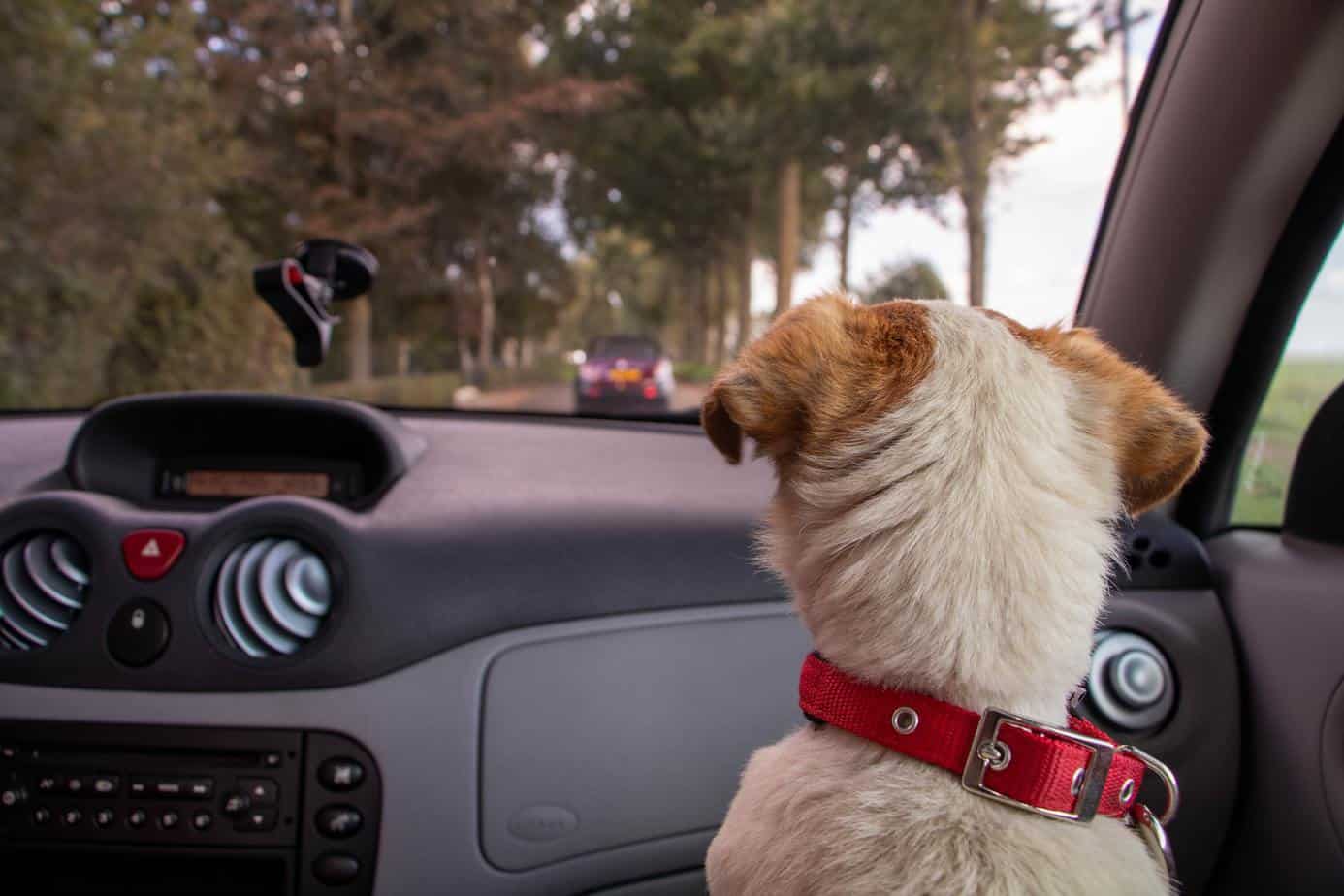
When you come to the point of your puppy pick up where it’s time to put the dog into the car, there are a few more things to consider.
For starters, your state may have laws that govern how dogs can legally ride in cars. It’s worth looking those up, and those of any of the states you may travel through on your way.
Additionally, some crates are crash tested, and these are obviously best for transporting your puppy. And yes, you should use a crate! You should always secure your dog in a vehicle, but this is especially true for the first car ride. You have no idea how the puppy will react to the ride and if they freak out you could both be in danger.
Take breaks when you need to. It’s good for you to stretch your legs and even better for your dog. Puppies need frequent potty breaks on long rides and they’ll get some socialization in as well. Just go slow and easy for your puppy and reassure him during this kaleidoscope of new things.
Bring food and water with you if you are traveling a long distance. Water is important even on shorter trips, as dogs can be anxious and stressed. Ask your vet what you can give your dog for motion sickness, just in case.
The First Vet Visit
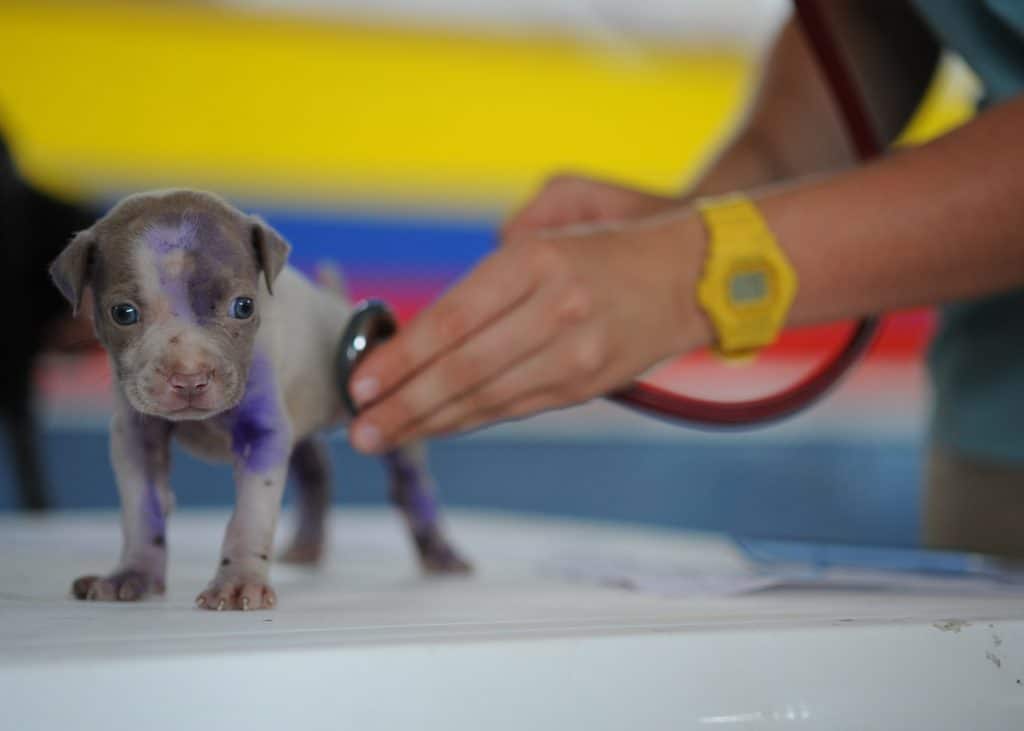
Get your new dog to the vet as soon as you can whether its a puppy or older adoptive dog. Your vet will set up vaccinations, make sure your dog is protected for heartworm and fleas, and check for congenital defects. Your dog will also have its vital signs checked.
Not only is your vet getting to know your new dog, but you are setting the tone for vet visits to follow. Try to make this experience enjoyable for your new dog. Bring some treats and your dog’s favorite toy. Don’t act stressed if you can help it- your dog is picking up on your vibes.
Your vet may need to schedule a follow up visit for your dog and the next time you go to the vet should hopefully be nice and smooth. If you already have a dog that your new puppy bonded to, ask if you can bring him along. Sometimes a little company is just what a dog needs to feel comfortable.
When You Get Home
Let your puppy have a bathroom break before you go inside and try to stay calm during entry. If it’s time for dinner, you can take care of that after your puppy explores a bit. It’s ok to keep your puppy confined to certain areas of your home for the first few days or weeks.
This helps keep valuables away from often destructive puppies but it helps with potty training too.
The first night with your puppy will involve some cuddling, some potty training, and some crate training too. Try your best to get your puppy to sleep in his crate right off the bat. You can put the crate in your room or somewhere the puppy can see you. This generally helps.
We have some tips about crate training a dog available for you if you need step-by-step instructions.
Assuming you can get your puppy settled, have a good long play before bedtime. Your puppy may be wound up from sitting in the car so long. Tiring him out will help him sleep without whining.
If your puppy seems depressed, this is also natural. Some dogs adapt faster to new people and environments. Do your best to comfort him, show him lots of love, and distract him from his doldrums.
You’ll need to puppy proof your home before the dog arrives, but you’ll also need to watch the puppy to see what he is particularly interested in. Some dogs long to rip up carpet and some are door jam chewers. You won’t know what you’ve got until you’re home with it.
You also need to make sure someone will be with the dog for the first few days. I’m talking about around the clock companionship and care if you can manage it. If not, ask a friend or professional pet sitter to come by and spend some quality time with your dog in the middle of the day.
Go Now, I Think You Are Ready
You’ve got the skills you need to bring that dog home! Your puppy is waiting for you and ready to provide a lifetime of love and adventures.
Make sure you have the supplies on the list and talk with your vet about your new puppy’s arrival. You’ll need to set up a well puppy visit soon after you get home, anyway.
You’re going to learn as you go with your puppy because every dog’s personality is a little bit different. As long as you have a firm foundation going in, you’ll be able to keep your dog safe and you can both grow together.
Let me know about your bringing puppy home story!
Continue reading:
Bringing Home a Baby to Your Fur Baby

